

Now for the good news: things really are getting better. It takes a streak of foolhardiness to answer the question “What are you optimistic about?”
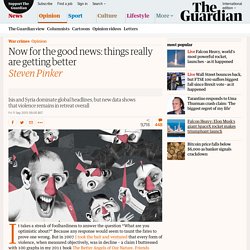
Because any response would seem to taunt the fates to prove one wrong. But in 2007 I took the bait and ventured that every form of violence, when measured objectively, was in decline – a claim I buttressed with 100 graphs in my 2011 book The Better Angels of Our Nature. Friends advised me I was setting myself up for embarrassment: a war with Iran, a contest over oil, or a nuclear terrorist attack could erupt any day. 6 Best Fact Checking Websites That Help You Distinguish Between Truth and Rumors.
The Internet has been called “The Information Super Highway” and rightly so.
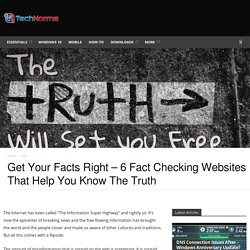
It’s now the epicenter of breaking news and the free flowing information has brought the world and the people closer and made us aware of other cultures and traditions. But all this comes with a flipside. The amount of misinformation that is spread on the web is staggering. It is spread mainly via Websites, Social Networks, and Email. The Hot Topics for such misinformation are Politics, Government Policies, Religion and various Scams and Hoaxes. Field Guide to Fake News Sites and Hoax Purveyors. The sharp increase in popularity of social media networks (primarily Facebook) has created a predatory secondary market among online publishers seeking to profitably exploit the large reach of those networks and their huge customer bases by spreading fake news and outlandish rumors.

Competition for social media’s large supply of willing eyeballs is fierce, and a number of frequent offenders regularly fabricate salacious and attention-grabbing tales simply to drive traffic (and revenue) to their sites. Facebook has worked at limiting the reach of hoax-purveying sites in their customers’ news feeds, inhibiting (but not eradicating) the spread of fake news stories. Hoaxes and fake news are often little more than annoyances to unsuspecting readers; but sometimes circulating stories negatively affect businesses or localities by spreading false, disruptive claims that are widely believed.
National Report World News Daily Report Huzlers Empire News Stuppid News Examiner. Six Easy Ways To Tell If That Viral Story Is A Hoax. “And so it begins … ISIS flag among refugees in Germany fighting the police,” blared the headline on the Conservative Post; “with this new leaked picture, everything seems confirmed”.
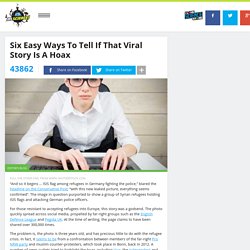
The image in question purported to show a group of Syrian refugees holding ISIS flags and attacking German police officers. For those resistant to accepting refugees into Europe, this story was a godsend. The photo quickly spread across social media, propelled by far-right groups such as the English Defence League and Pegida UK. The School of Life. Science Of Persuasion 1280x720 Master.
Calculating the Hidden Cost of Industrial Farming. It is nearly impossible to calculate the real costs and benefits—including the externalized or invisible costs—of any human activity: growing soybeans, making car tires, cooking dinner for your family.
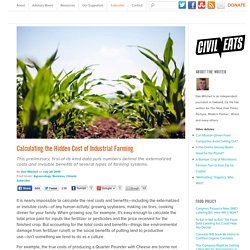
When growing soy, for example, it’s easy enough to calculate the total price paid for inputs like fertilizer or pesticides and the price received for the finished crop. But accounting for the total costs and benefits—things like environmental damage from fertilizer runoff, or the social benefits of putting land to productive use—isn’t something we tend to do as a culture. For example, the true costs of producing a Quarter Pounder with Cheese are borne not only by McDonald’s, but by all of us who have to deal with, among other things, environmental degradation caused by industrial farming and the bad public health outcomes of eating such meals.
McDonald’s doesn’t pay much of those costs, and in fact draws a profit while the rest of us pay dearly. Measuring True Costs at Three Farms. Trulia study finds Americans say they care about the environment but aren't willing to pay for it. The extremely dated "It ain't easy being green" title of this Trulia survey actually misinterprets the data; judging by the questions they asked, it is perfectly easy being green; it just ain't cheap.
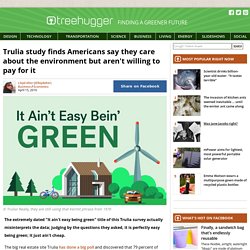
The big real estate site Trulia has done a big poll and discovered that 79 percent of Americans consider themselves to be environmentally conscious. That sounds like a good thing, but when you get right down to it they talk the talk, but few actually walk the walk (well, actually 49 percent do bike or walk), or even drive the drive (only 19 percent). In fact, "Only 26% of Americans say that they actually consider the environment in their daily actions beyond recycling and turning off the lights. " Curiously, what seem like easier, cheaper and higher impact actions like living in a smaller home (16%) and buying renewable electricity from a utility provider (10%) are not nearly as high on the list of ways to be environmentally responsible.
BE HATED. Rhetological Fallacies. A Practical Guide To Critical Thinking. A Quest for Truth: A List of the Top 8 Unbiased News Sources. For anyone interested in things like politics, society, religion, etc., it is often difficult to accept that the information we are receiving might be coming from biased sources.

We all like to "Every man is entitled to his own opinion... but not his own facts! " hold faith in the idea that the journalists we look to for insight about the world around us are presenting nothing more than neutral, hard-hitting facts. Unfortunately, however, that is too rarely the case. 6 Quick Ways to Spot Fake News. The spectrum of less-than-credible links posted to social media sites is vast.
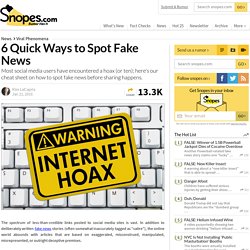
In addition to deliberately written fake news stories (often somewhat inaccurately tagged as “satire”), the online world abounds with articles that are based on exaggerated, misconstrued, manipulated, misrepresented, or outright deceptive premises. It’s fair to say that the majority of users on social media sites wish to share interesting, funny, compelling, unique, or otherwise discussion-worthy material without having to run full-scale fact checks on everything. Get into.